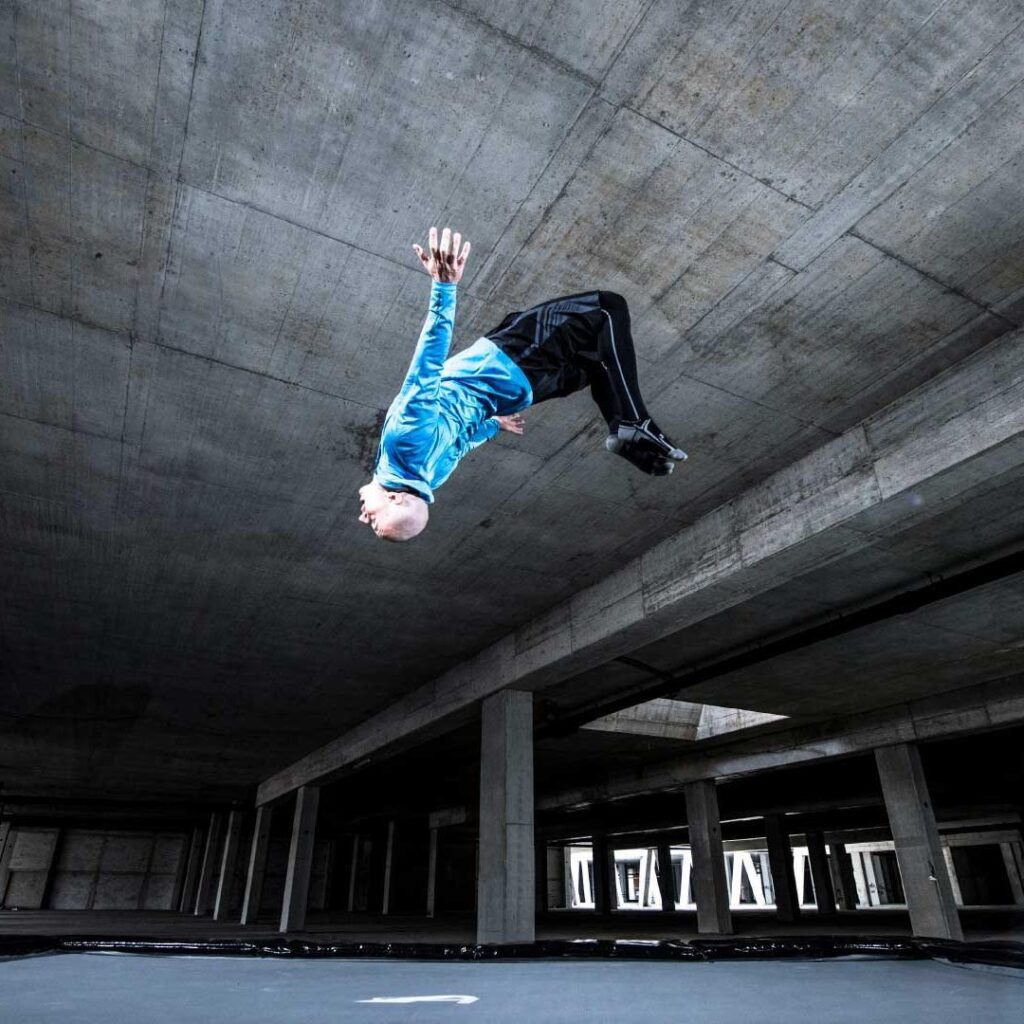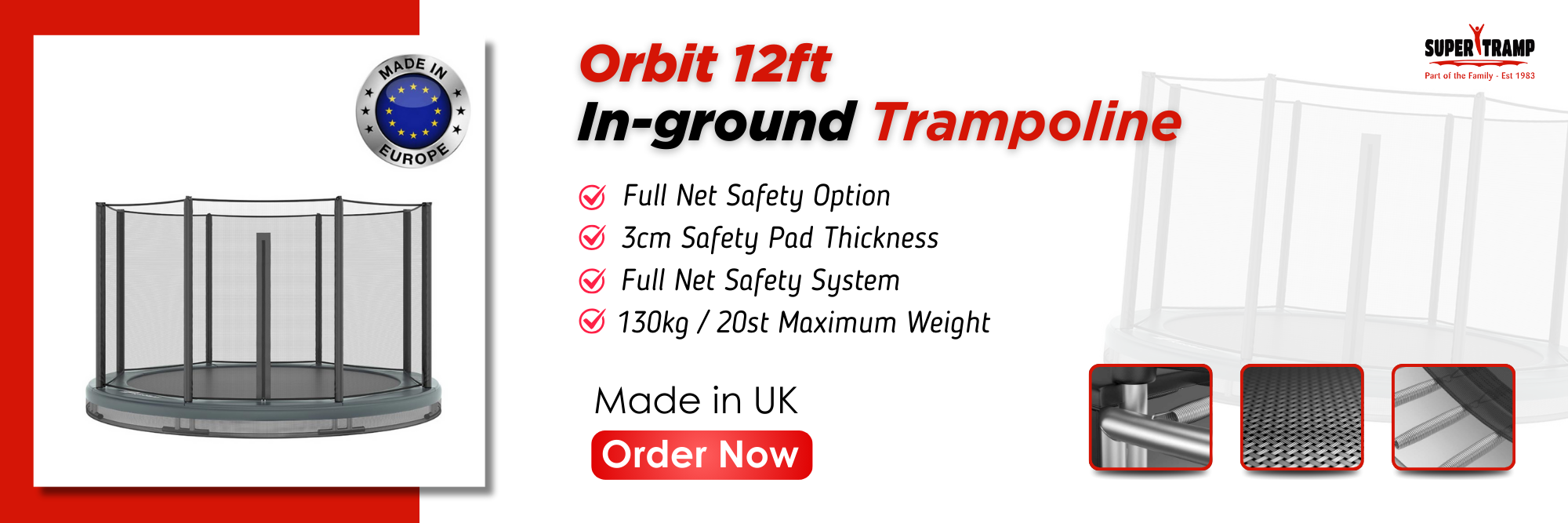Table of Contents
ToggleJumping on a trampoline is like bouncing into a world of excitement and adventure. It’s a fantastic way to stay active, have fun, and learn thrilling new skills. However, while the thrill of soaring through the air captivates our imagination, it is crucial to remember that fun should never come at the cost of safety. Just as a pilot wouldn’t fly without checking the plane, you shouldn’t jump without ensuring proper safety measures. With this in mind, we must focus on the risks associated with learning trampoline skills without the right precautions.

In this blog, we’ll explore five compelling reasons why it’s not safe to learn trampoline skills without taking necessary safety measures. Each reason highlights the importance of safety, providing both insight and solutions to ensure a safe and enjoyable trampolining journey. Join us as we delve into these key reasons and learn how to bounce safely while having the time of your life. Remember, nothing is more important than your life and safety, so let’s embark on a safe trampolining adventure together! because your safety is our priority.
Reason 1. Risk of Physical Injury
Risk is a part of life, from crossing the road to sitting under a tree, and a lack of awareness can increase it even more. The same goes for trampolines, learning in-ground trampoline skills can be so exciting and fun that the risks associated with not taking safety measures can be ignored easily. But, neglecting these precautions can lead to serious injuries. Here’s a closer look at the common physical injuries and how we can address them:
Common Injuries
- Sprains and Strains: Bouncing on a trampoline can put a lot of stress on your ankles, knees, and wrists. If you land awkwardly or push your body too hard, you risk spraining a joint or straining a muscle. These injuries can be painful and might require weeks of rest to heal.
- Fractures: Falling off a trampoline or landing incorrectly can result in broken bones, particularly in the arms, legs, or collarbone. Fractures are more severe and can require medical treatment and prolonged recovery time.
- Concussions: A fall that involves hitting your head on the trampoline mat or frame can lead to concussions. These head injuries can cause dizziness, headaches, and even long-term brain damage if not treated properly.
To illustrate the prevalence of these injuries, studies have shown that unsupervised trampoline use results in thousands of emergency room visits each year.
Lack of Protective Gear
- Helmets and Pads: Without helmets and padding, the risk of sustaining head injuries and bruises increases significantly. Protective gear acts as a buffer against the impact of falls, reducing the severity of injuries.
- Proper Clothing and Equipment: Wearing the right clothes, such as fitted athletic wear, can prevent the fabric from getting caught in the trampoline springs.
Taking the right precautions is crucial to avoiding these common injuries. Remember, safety isn’t just an option—it’s a necessity!
Solutions to Minimise Risk of Physical Injury
- Safety Nets and Enclosures: Install safety nets enclosures around the trampoline to prevent falls. These enclosures act as a barrier, reducing the likelihood of jumpers landing off the trampoline.
- Padding: Use protective padding on the trampoline frame and springs to cushion impacts and prevent injuries from falls or awkward landings.
Reason 2. Inadequate Supervision and Guidance
When it comes to learning rectangle trampoline skills, supervision and guidance are paramount. Parents sometimes leave their children alone while they are exploring new trampoline tricks, but this can be very unsafe. Children are naturally energetic and enthusiastic, eager to try new things. They can easily be influenced by their favourite influencers performing professional tricks without safety measures, which can lead to risky behaviour. Therefore, be alert from the beginning; don’t wait for mishaps to open your eyes. Always ensure that a responsible adult is present and watching closely whenever a trampoline is in use.
Consequences of Improper Technique
- Increased Risk of Accidents: Attempting advanced skills without guidance can lead to severe accidents. Improper techniques, such as incorrect landings or uncontrolled flips, can result in injuries ranging from minor bruises to serious fractures.
- Development of Bad Habits: Without proper instruction, individuals may develop bad habits that are difficult to correct later. These habits not only increase the risk of injury but can also hinder progress in mastering trampoline skills.
- Lack of Safety Awareness: Beginners may not fully understand the risks involved in trampolining. A coach or trainer can instil a sense of safety awareness, emphasising the importance of following rules and using equipment correctly.
Solutions for Safe Supervision
- Follow RoSPA Rules: Familiarise yourself with the Royal Society for the Prevention of Accidents (RoSPA) guidelines. These rules offer comprehensive safety tips and practices for safe trampolining.
- Choose the Right Trampoline: Buy a fitness trampoline that suits the needs and skill levels of your children. Consider features like size, weight capacity, and safety enclosures to ensure a safe experience.
- Monitor Influences: Be aware of what influences your children, and discuss the importance of not pushing their limits by trying to mimic professional tricks seen online. Encourage them to learn safely and responsibly.
- Use Trampoline Socks: Make sure children wear trampoline socks, which provide better grip and help prevent slips and falls. These socks are designed to enhance safety and improve overall performance on the trampoline.
By prioritising and ensuring adequate supervision, you can significantly reduce the risks associated with trampolining. Proper guidance not only helps prevent injuries but also enhances the enjoyment and learning experience, allowing individuals to thrive safely in this exciting activity.
Reason 3. Overconfidence and Risky Behaviour
Overconfidence is often the first step toward mistakes when executing jumps and flips on a garden trampoline. This is particularly common among adults who believe they can master trampoline skills without safety measures or professional instructors. Unfortunately, this overconfidence can lead to serious injuries, such as falls off the trampoline or awkward landings, leaving you with regrets that could last a lifetime. Understanding limits is crucial for safe trampolining and for enjoying the activity without unnecessary risks.
Understanding Limits
- Overconfidence: Many individuals overestimate their abilities, believing they can easily perform complex tricks. This overconfidence can lead them to skip essential steps in learning basic skills, resulting in dangerous situations.
- Risks of Advanced Stunts: Attempting stunts or tricks beyond one’s capability can lead to accidents.
- Lack of Safety Measures: Without appropriate safety measures, such as protective gear and spotters, the risk of injury increases. Overconfidence can cause individuals to neglect these critical safety practices, putting themselves in harm’s way.
Encouraging Caution
- Progress at a Safe Pace: It is important to progress at a pace that matches your skill level. Gradually increase the difficulty of your routines as you become more confident and comfortable with basic techniques.
- Set Realistic Goals: Setting realistic and achievable goals helps prevent the temptation to rush into advanced tricks. Celebrate small victories and focus on mastering each skill before moving on to the next challenge.
- Acknowledge Your Limits: Recognize and respect your physical and skill limitations.
Solution: Importance of Professional Instruction
- Role of Trained Instructors: Professional instructors play a vital role in teaching proper techniques and spotting potential dangers. They guide beginners through the basics, helping them understand the right way to jump, land, and perform tricks safely. Their expertise ensures that jumpers progress at a suitable pace, reducing the risk of injury.
- Personalised Guidance: Coaches and trainers provide personalised attention, correcting forms and offering specific advice tailored to each individual’s needs. This one-on-one guidance is crucial in preventing mistakes that could lead to accidents.
- Building Confidence Safely: With professional supervision, learners can build their confidence while knowing they are in safe hands. Instructors introduce new skills gradually, ensuring that each step is mastered before moving on to more advanced tricks.
By acknowledging the risks of overconfidence and emphasising the importance of professional instruction, individuals can enjoy commercial trampoline safely. Remember, the thrill of trampolining is best experienced when safety and skill development go hand in hand, allowing for a fun and injury-free experience.
Reason 4. Unsafe Trampoline Setup
An unsafe 14ft trampoline setup is like a ticking time bomb, waiting to go off when least expected. Ensuring that your trampoline is properly set up and maintained is crucial for safe use. Neglecting these aspects can lead to serious accidents and injuries. It’s essential to recognize the potential hazards and address them proactively to enjoy a safe trampolining experience.
Potential Hazards of Poor Setup
- Improper Assembly: A poorly assembled trampoline poses significant risks. Loose bolts, misaligned springs, or missing components can lead to unexpected collapses or malfunctions during use. To prevent these dangers, always follow the manufacturer’s assembly instructions carefully and double-check that all trampoline spares are securely fastened.
- Lack of Maintenance: Over time, trampolines can experience wear and tear. Components such as the jumping mat, springs, and frame may degrade or weaken, increasing the risk of injury. Regular inspections are crucial to identify and address any signs of damage or deterioration. By keeping your trampoline in top condition, you can ensure its safe use for years to come.
- Importance of Regular Inspections: Inspect your trampoline regularly to identify any potential issues before they become hazards. Check for rust on the frame, tears in the mat, or loose springs. Address these problems immediately to maintain a safe jumping environment.
Environmental Factors
- Uneven Surfaces: Placing a trampoline on an uneven surface can destabilise it, increasing the risk of tipping over during use. Always ensure your trampoline is set up on a flat, stable surface to provide a solid foundation for jumping.
- Obstacles and Hazards: Setting up a trampoline near trees, fences, or other obstacles poses a significant danger. Jumpers could collide with these objects, leading to serious injuries. Ensure there is ample clearance around the trampoline, providing a safe space for users to enjoy.
- Weather Conditions: Weather conditions can also impact trampoline safety. Windy conditions can cause a trampoline to tip over or blow away if not properly anchored. Similarly, rain can make the jumping surface slippery, increasing the risk of falls. Always use weather covers to avoid risks.
By recognizing the potential hazards of an unsafe trampoline setup and taking the necessary steps to mitigate them, you can create a safe environment for trampolining. Remember, a well-maintained trampoline is the key to enjoying all the fun and excitement of bouncing without the worry of accidents or injuries. Safety should always come first to ensure a joyful and worry-free experience for everyone.
Reason 5. Lack of Emergency Preparedness
A lack of emergency preparedness is like setting out on an adventure without a map—you might face unexpected challenges without knowing how to handle them. In the context of trampolining, having a robust safety plan is essential for effectively managing emergencies and preventing accidents. Understanding how to respond to emergencies and implementing preventative measures can make all the difference between a safe, enjoyable experience and a potential disaster.
Importance of a Safety Plan
- Knowing First Aid Procedures: Having a well-established safety plan includes knowing basic first aid procedures. In the event of an injury, quick and knowledgeable responses can be crucial. For example, understanding how to treat sprains, fractures, or concussions can make immediate care more effective until professional medical help arrives.
- Emergency Contacts: Keep a list of emergency contacts, including local emergency services and medical professionals, readily available. Ensure that all users of the trampoline are aware of these contacts and know how to use them in case of an emergency.
- Training and Drills: Conduct regular safety drills to ensure that everyone knows what to do in an emergency. Training all users, including children, on how to react in case of a fall or injury can significantly improve response times and reduce panic.
By emphasising the importance of having a comprehensive safety plan and integrating preventative safety measures, you can significantly enhance your playground trampoline experience. Being prepared for emergencies and taking proactive steps to prevent accidents ensures that fun and safety go hand in hand, allowing you to enjoy all the thrills of trampolining without unnecessary risks. Remember, effective preparation and preventative measures are the best ways to safeguard your trampoline adventures and ensure a safe environment for everyone involved.
Conclusion
Safety is the foundation of a fun trampoline experience. Remember, overconfidence, poor setup, and lack of supervision can turn thrilling jumps into serious accidents. Always prioritise proper assembly, use protective gear, and seek professional instruction to enjoy trampolining safely. Keep safety measures in place, and you’ll bounce into fun without worry.
For an adventure where fun meets safety, visit the Super Tram Trampoline. Discover how our top-quality trampolines ensure both excitement and security in every jump. Don’t let safety be an afterthought—make it your priority!
Trampolines pose safety concerns such as the risk of falls, collisions, and improper landings that can lead to injuries. It’s crucial to ensure the trampoline is placed on level ground, has sufficient padding, and is used under supervision to minimise risks.
The most common trampoline injuries include sprains and strains, fractures, and concussions. These injuries often occur due to awkward landings, collisions with others, or falling off the trampoline.
Trampoline safety nets can significantly reduce the risk of falling off the trampoline and help prevent injuries. However, they must be properly installed and regularly maintained to ensure they provide effective protection.
In addition to sprains, strains, and fractures, trampolining can also result in cuts, bruises, and head or neck injuries. These injuries are often caused by improper use, overconfidence, or lack of supervision.
Safety rules for trampolines include limiting use to one person at a time, using padding and safety nets, avoiding flips and risky manoeuvres without professional training, and ensuring adult supervision for children. Regular maintenance checks on the trampoline’s condition are also important to ensure user safety.
DON'T MISS...
- 10 Garden Trampolines Perfect for Your UK Garden
- Understanding Trampoline Weight Limits The Key to Safe Bouncing
- Trampoline Gymnastics: How Bryony Page Lit Up the Sky and Britain’s Heart
- The Ultimate Guide to Choosing the Perfect Round Trampoline for Your UK Garden
- 30 Essential Safety Tips for Enjoying Trampoline Parks





